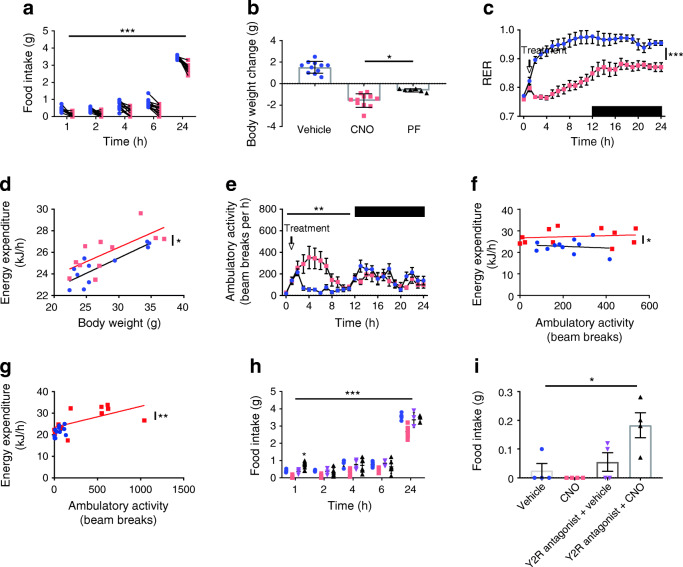Fig. 3.
Colonic L cell stimulation reduces food intake, actions directly attributable to PYY, and increases energy expenditure, a consequence of increased activity. (a) Food intake post administration of vehicle or CNO (n = 11, crossover design). (b) Body weight change over the 24 h period, including a pair-fed group (PF) which demonstrate attenuated weight loss. (c) RER, (d) Energy expenditure, (e) ambulatory activity and energy expenditure 1 h (f) and 2 h (g) post treatment vs ambulatory activity for mice treated with vehicle or CNO (n = 11, crossover design). (h, i) Food intake of animals pre-treated (t = −30 min) with JNJ-31020028 (20 mg/kg i.p.) post administration of vehicle or CNO (0.3 mg/kg i.p., delivered contralaterally to vehicle or antagonist pre-treatment, n = 4–8 mice per group). Animals in (h) had been transiently fasted as in (a–g) whereas animals in (i) had free access to food. Values presented as group mean ± SEM. *p < 0.05, **p < 0.01, ***p < 0.001 by 1-way ANOVA with Dunnett’s post hoc test (b, i), 2-way ANOVA (a, c, e, h) or ANCOVA (d, f, g). Blue symbols, vehicle; Red symbols, CNO, triangles (down), Y2R antagonist + vehicle; triangles (up), Y2R antagonist + CNO. Dark phase is indicated by black bars in c and e

